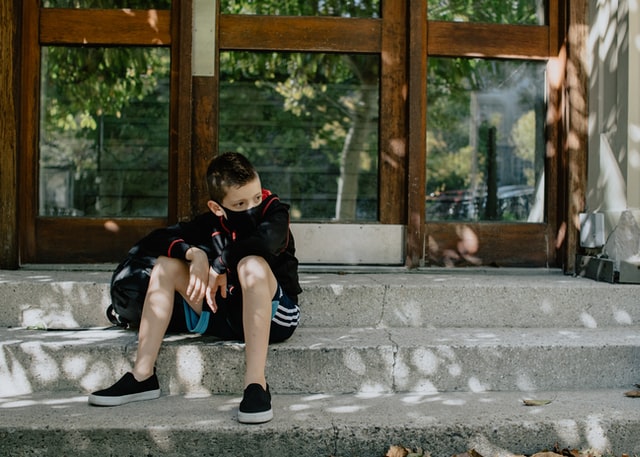Using Technology to Address Student Mental Health
Tracking student mental health continues to be a priority as schools return to in-person learning

In this recent Tech & Learning virtual roundtable, Dr. Kecia Ray talked with two district CTOs and an industry professional about their strategies in using technology to spot early warning signs of student mental health concerns and protect students from cyberbullying, self-harm, and violence.
“We all know the isolation that the kids and the staff are feeling,” said Rob Chambers, VP of Customer Success for Lightspeed Systems, who also participated in the event. “And having technology thrust upon us as everyone did, has changed the world that we're experiencing.”
See the on-demand version here
Key Takeaways
The new ‘normal.’ COVID has dramatically changed expectations around student mental health. For example, Stacy Royster, CTO/Director of Technology for Opelika City Schools in Alabama, said she was shocked that once the COVID lockdown and remote learning started in the district, there was a dramatic increase in the alerts from the district’s network monitoring platform, Lightspeed Systems, involving younger students. “We know what it's like to be a teenager and the things that go through their heads and what we have to deal with on a day-to-day basis with those students but those things just shifted down to younger grades, very quickly,” Royster said. “All of a sudden we were seeing Google searches for ‘How do I hurt myself?’ and these were for second graders.” Seeing the increase in alerts, the district put in new mental health supports for younger students.
Just like the students, adults have also had a hard time the past year, said Kyle Berger, Chief Technology Officer for Grapevine-Colleyville ISD in Texas. And that was also reflected in increased alerts from Lightspeed’s platform. “Sometimes we're so focused on the kids, we forget about the staff,” Berger said. “And as we started seeing lots of various alerts from them, we were able to reach out one-to-one and just talk with them through how they were doing.”
Technology was also being used beyond educational purposes, including in families with challenging socio economic issues. “The parents were also using the school devices,” said Royster. “In fact, we would start to see job searches in the student’s history and we would have our counselors to reach out to those families to see if the parent lost their job because of COVID. So it was not just whole-child but it was whole-family support we were able to offer by monitoring this online activity.”
Tech evolution. While navigating the sudden reliance on technology, new learning and usage habits have emerged. “When COVID started, kids were very concentrated on trying to maintain that normal school schedule,” said Berger. “But as that first month progressed, we started seeing pockets of work -- a student would log in, do maybe one thing, then go off and do other things, and then come back to work. They began to really self manage their time a lot more.”
Tech & Learning Newsletter
Tools and ideas to transform education. Sign up below.
During the lockdown, devices have gone from being a secondary learning tool to being the primary one, said Chambers. “The other thing that we had to address very rapidly was a shift to using tools in education that had not been used before, such as Zoom and YouTube,” he said. And as more kids have delved into new technology and platforms, it’s caused them to isolate more, which is a big concern for parents and educators, he added.
The floodgates of alert fatigue. “I never have any off hours because technology is 24/7,” said Royster, who added that she was afraid that something would happen in regard to a student either after work or on the weekend. So she started relying more on the tools and the district team.
Berger agreed, noting that the pandemic opened up a floodgate of alerts, which brought about a certain level of fatigue. “So it's so important to have accurate tools, to really sort through all the data to make concise decisions and respond quickly,” he said. “That is so important because not just one person can do it all the time.”
New possibilities. “In the last 12 months we’ve gone from pandemic to pandemonium to possibilities,” said Berger, adding that it’s critical to not to leave behind the lessons learned in the past year. “It's now to decide what is normal.”
“You will never be able to hold technology back now,” said Royster. “We have changed the face of education. We have rewritten what we’re doing in our classrooms. Every teacher has their entire course digitally at this point. And so when we do come back completely face-to-face, think about the Tier 2 and Tier 3 instruction. We have so many screen casts of reading lessons and math lessons and demonstrations that we will be able to use for those types of interventions, it's going to turn education upside down! It’s what us in edtech had been begging for for years. Unfortunately, it took a pandemic. But we’re where we are now, and everybody's excited about it.”
The parent connection is now stronger than ever, said Berger. “They have crawled inside and outside of every lesson and understand everything. Our parents know more about standards now and what's expected to be learned to move on more than they ever have in the past.”
“You can’t give this to parents and then take it away,” said Chambers. “We always wanted more and more parent engagement. And now we have it in schools, and I don't think that it's going to go away.”
More from T&L: Lunch 'n Learn roundtable recaps
Ray Bendici is the Managing Editor of Tech & Learning and Tech & Learning University. He is an award-winning journalist/editor, with more than 20 years of experience, including a specific focus on education.
